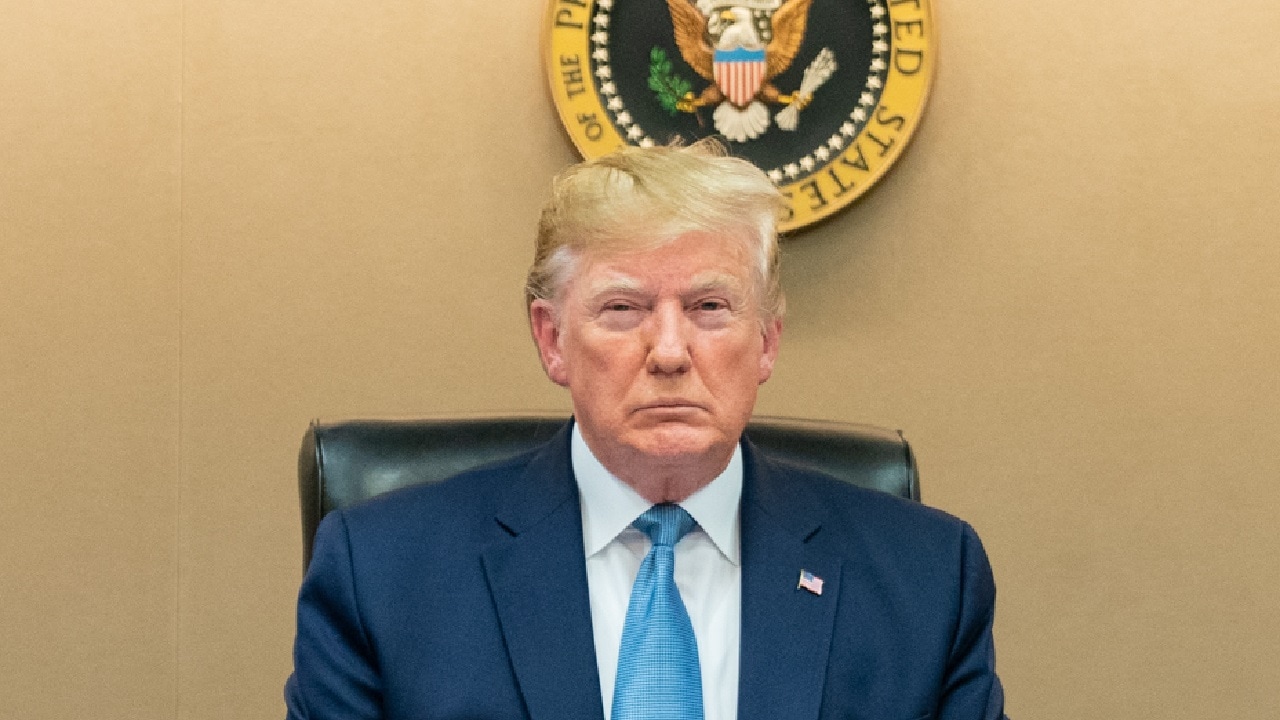Maya Carlin

President Donald J. Trump is joined by Vice President Mike Pence, National Security Advisor Robert O’Brien, left; Secretary of Defense Mark Esper and Chairman of the Joint Chiefs of Staff U.S. Army General Mark A. Milley, right, Saturday, Oct. 26, 2019, in the Situation Room of the White House monitoring developments as U.S. Special Operations forces close in on notorious ISIS leader Abu Bakr al-Baghdadi’s compound in Syria with a mission to kill or capture the terrorist. (Official White House Photo by Shealah Craighead)
The third anniversary of landmark agreements between Israel, the United Arab Emirates, and Bahrain, known as the Abraham Accords, is approaching. Joint normalization between the Jewish state, Sudan, and Morocco later followed, growing the number of countries in the region that recognize Israel.
Now is a good time to revisit the peace treaties to see how they have reshaped the trajectory of Middle East relations.
Named after the father of three monotheistic religions founded in the Middle East — Judaism, Islam and Christianity — the U.S.-brokered Abraham Accords made history as the first time in more than two decades that any country in the Middle East and North Africa region normalized ties with the Jewish state.
In 1979, Egypt became the first country in the region to establish a peace treaty with Israel, followed by Jordan in 1994.
Since the Abraham Accords were first penned almost three years ago, normalization has opened new opportunities for defense cooperation, collaboration on food and water security, and much more.
A Brief Overview
For nearly 20 years, the Saudi-led Arab Peace Initiative dictated that Arab countries would not seek diplomatic relations with the Jewish state until a “just settlement” to the issue of Palestinian refugees was addressed. By 2007, the Arab League officially endorsed this initiative, dimming the prospects for any push toward normalization. In addition to the requirements on establishing a Palestinian state, the initiative called for a full Israeli withdrawal from the so-called occupied territories, including Gaza, the Golan Heights, Lebanon, and the West Bank. The Abraham Accords’ successful acceptance by some of the Arab League countries meant that the Palestinian issue could be bypassed in order to achieve a larger goal.
Iran Influenced the Abraham Accords
While the Abraham Accords primarily centered on promoting peace and expanding diplomatic relations between Israel and its neighbors, the opportunity to officially counter Iran was a bonus. In recent years, the Iranian regime has expanded its ballistic missile arsenal and further developed its nuclear program. Iran-linked proxy groups throughout the Middle East have carried out hundreds of rocket, drone, and missile barrages targeting American assets among others. Specifically, Riyadh and Tehran have supported opposing sides in Yemen’s civil war. The Houthi rebels, fully supported by Iran monetarily and militarily, have targeted civilian centers and critical infrastructure in both Saudi Arabia and the UAE.
Since Iran’s top adversary, Israel, is more militarily capable of keeping the Islamic Revolutionary Guard Corps at bay, it made sense for Riyadh and Abu Dhabi to normalize ties with the country. \
In fact, a few months prior to the Abraham Accords, Saudi Arabia, the UAE, Bahrain, Qatar, and Egypt ended a three-year rift by signing the collaborative “solidarity and stability act,” the Al-Ula Declaration. This agreement mirrors the Abraham Accords, since it aims to promote peace while also strengthening the joint capabilities of its signers to better counter Iran’s hostilities.
The benefits of the Abraham Accords extend past security issues. Earlier this month, a group of Israeli and Moroccan researchers jointly excavated two huge “genizas” uncovered in rural Morocco. Without the normalization ties in place, Israeli architects would not have access to such a site, which holds historic holy texts.
No comments:
Post a Comment